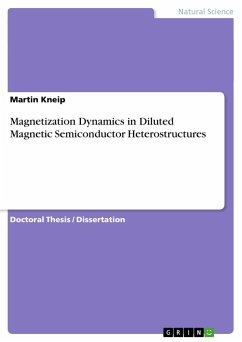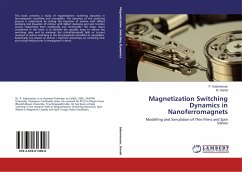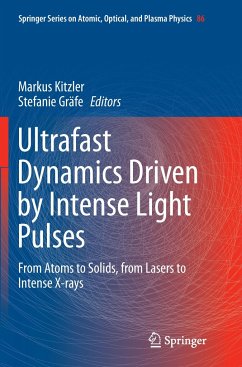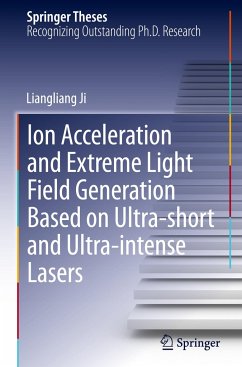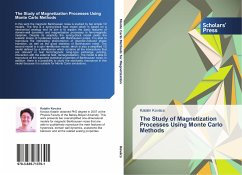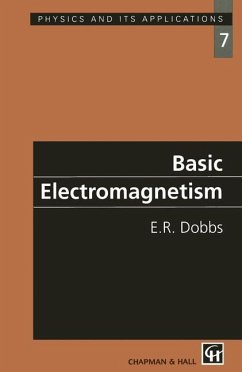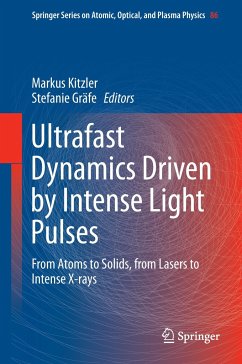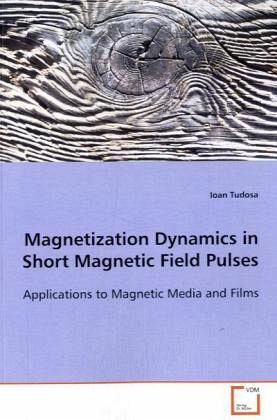
Magnetization Dynamics in Short Magnetic Field Pulses
Applications to Magnetic Media and Films
Versandkostenfrei!
Versandfertig in 6-10 Tagen
32,99 €
inkl. MwSt.

PAYBACK Punkte
16 °P sammeln!
When studying magnetic phenomena at short time scalesone method is to apply a very short pulse magneticfield and study the response to it. It is difficultto make very short magnetic field pulses withconventional solid-state techniques when the electriccurrent used in generating the magnetic field has toovercome inevitable capacitive and inductive effects.However, if one makes an electric current withrelativistic electrons in vacuum, those effects aremuch more reduced. We explore the precessionalswitching in magnetic recording media and modelmagnetic thin films using the magneticfield associate...
When studying magnetic phenomena at short time scales
one method is to apply a very short pulse magnetic
field and study the response to it. It is difficult
to make very short magnetic field pulses with
conventional solid-state techniques when the electric
current used in generating the magnetic field has to
overcome inevitable capacitive and inductive effects.
However, if one makes an electric current with
relativistic electrons in vacuum, those effects are
much more reduced. We explore the precessional
switching in magnetic recording media and model
magnetic thin films using the magnetic
field associated with the electron bunch of the
Stanford Linear Accelerator. Information about the
magnetization dynamics is extracted from the magnetic
patterns generated by the magnetic field. The shape
and size of these patterns are influenced by the
dissipation of angular momentum involved in the
switching process. The book should be useful to
students and professionals in the area of magnetism.
one method is to apply a very short pulse magnetic
field and study the response to it. It is difficult
to make very short magnetic field pulses with
conventional solid-state techniques when the electric
current used in generating the magnetic field has to
overcome inevitable capacitive and inductive effects.
However, if one makes an electric current with
relativistic electrons in vacuum, those effects are
much more reduced. We explore the precessional
switching in magnetic recording media and model
magnetic thin films using the magnetic
field associated with the electron bunch of the
Stanford Linear Accelerator. Information about the
magnetization dynamics is extracted from the magnetic
patterns generated by the magnetic field. The shape
and size of these patterns are influenced by the
dissipation of angular momentum involved in the
switching process. The book should be useful to
students and professionals in the area of magnetism.



